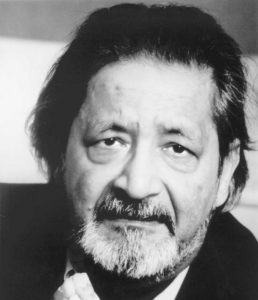Park MacDougald in The Point:
 In late 1979, V. S. Naipaul, then middle-aged and of some literary stature, traveled to the newly declared Islamic Republic of Iran for what would eventually become his travelogue Among the Believers. He hated the place, beginning with his guide, a man named Sadeq:
In late 1979, V. S. Naipaul, then middle-aged and of some literary stature, traveled to the newly declared Islamic Republic of Iran for what would eventually become his travelogue Among the Believers. He hated the place, beginning with his guide, a man named Sadeq:
He was in his late twenties, small and carefully dressed, handsome, with a well-barbered head of hair. I didn’t like him. I saw him as a man of simple origins, simply educated, but with a great sneering pride, deferential but resentful, not liking himself for what he was doing. He was the kind of man who, without political doctrine, only with resentments, had made the Iranian revolution.
Naipaul arrived when the country was still in flux: the revolution had been greeted with optimism, and Iran’s liberals and leftists still believed that the ascendancy of the mullahs was a passing phase. Yet the mood he caught was sinister. In Tehran’s northern suburbs lay wide European boulevards, where the country’s rich and cultivated lived in between shopping trips to London, Paris and Milan. The children of these upper classes—educated, idealistic, English- and French-speaking—had played a key role in the early stages of the revolution and had become, for many in the West, the face of the new Iran. They had scribbled English graffiti on the streets of London (“Down with fascist Shah”) and appeared on American television programs, which Naipaul had watched, to explain their revolution in American terms: freedom realized, a tyrant overthrown.
More here.
